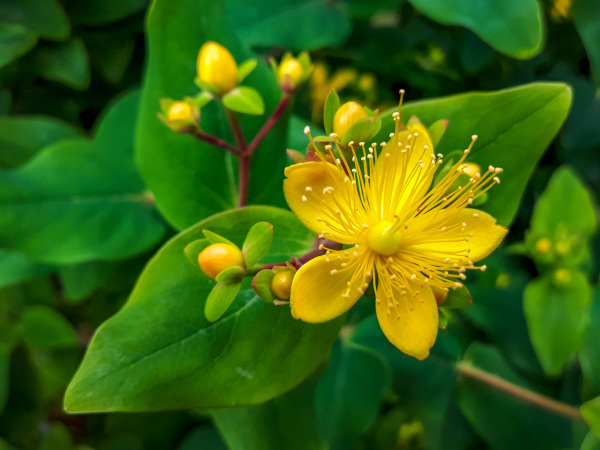How to grow Hypericum
Hypericum is commonly known as ‘St John's wort’ and is also sometimes referred to as ‘Rose of Sharon’ – it is a member of the Hypericaceae family. Most varieties are deciduous or semi-evergreen and summer flowering with lovely bright yellow flowers and followed, in autumn, by attractive berries in different shades of black, red, pink and white. There are thought to be around 400 different varieties, excluding hybrids, available: each with unique and exceptional features.
Before planting Hypericum, be aware that all parts are toxic to animals and should be handled carefully as contact with the leaves can cause skin irritation. In the main animals know instinctively which plants to avoid and Hypericum is a valuable, easy going shrub which is tolerant of most growing conditions. Hypericum will put up with drought and shade, (although flowers best in sun) but dislikes waterlogged soils. Hypericum has a long flowering season and carries a profusion of blooms from mid spring through to summer.
Plants are native to Europe, North Africa and South-West Asia, although they are so widespread it is, therefore, difficult to ascertain its true origin. Hypericum is also found in North and South America along with Australia and New Zealand. What can be stated is they thrive in our UK climate and are able to tolerate most soils and aspects with a need for either full sun or partial shade. Hypericum like a moist, well-drained soil and mature over around five years to reach heights varying between 0.5 and 1m. Flowers are up to 3cm in diameter and roughly star shaped with prominent, decorative stamen which make stems good for cutting to add to a vase. Taller specimens also make excellent and robust hedging.
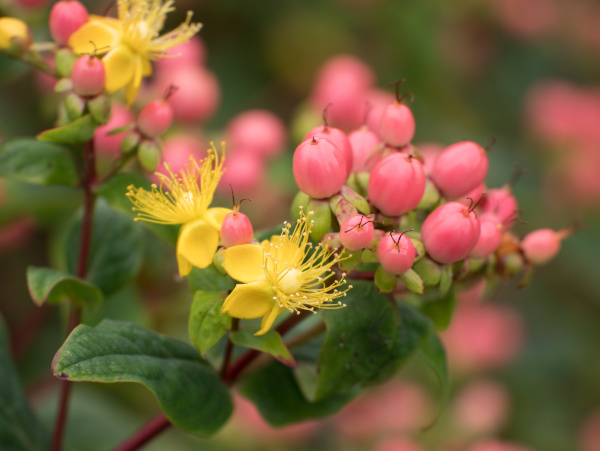
Zantedeschia is a genus of flowering plants from the family Araceae and is native to southern Africa. With a rich history dating back to the Ancient Romans, these deciduous or semi-evergreen perennials have been used as a symbol of celebration. Zantedeschia was Named after Professor Giovanni Zantedeschia, an Italian botanist.
There are two main forms of Zantedeschia: hardy and tender. Hardy forms of the plant can be grown outdoors, enjoy moist soil and full sun or partially shaded conditions - these are known as Arum lilies. Tender forms of Zantedeschia prefer being grown in containers or pots and should be brought inside over the winter - these are known as Calla lilies.
With tuberous flora in all colours from whites, yellows and oranges to deep reds and purples, Zantedeschias are not to be overlooked in any garden, as long as they have sufficient sunlight to grow in.
Ready to learn more about growing Zantedeschia? Read on for all there is to know...

Key Information
Soil pH
Position
Hardiness

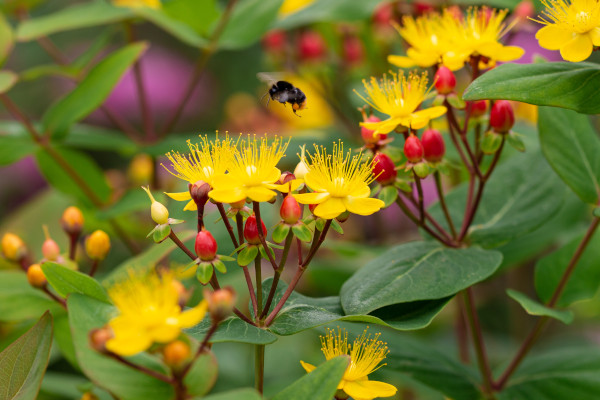
Where & when to plant Hypericum
Position - Full sun or partial shade
Soil - Well-drained, moderately fertile soil of any kind.
Flowering Period - Late spring and summer with berries in autumn
Hardiness - H6 (-15 to -20°C)
For best results, plant in spring or autumn as the soil is still warm and plants will be able to settle in quickly. Summer and winter planting are best avoided due the heat or the cold but, providing ground is not frozen, waterlogged or parched it is possible to plant at any time of year as long as your shrub has been hardened off first (in winter).
Dependent on the mature size of your hypericum, plants will make a valuable addition to an herbaceous border and also make a fantastic focal plant when in full bloom. As much as they will survive if planted in a container, they will not necessarily thrive, so container planting is not recommended.
How to plant Hypericum
Although Hypericum will survive if planted in a container, they will not necessarily thrive, so container planting is not recommended.
In the ground
- Clear the chosen area of weeds.
- Dig a planting hole several times larger than the root ball. Now is the time to give your soil a boost with the addition of plenty of well-rotted organic matter, and, if liable to sit wet, plenty of horticultural grit.
- Place the plant in the hole, ensuring the top of the root ball sits level with the surface of the soil. Too low and the plant may rot, too high and the roots can dry out.
- Backfill with soil and firm in gently.
- Soak well with water.
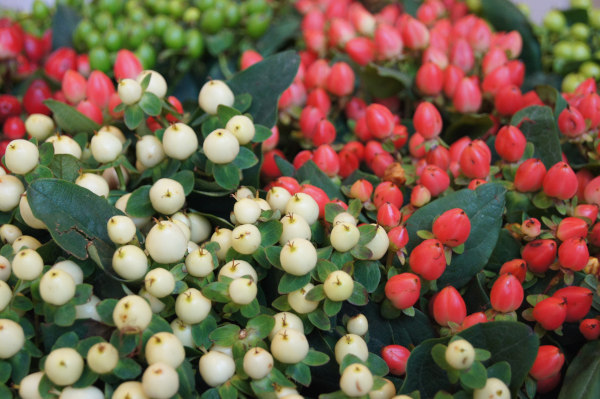
What to plant with Hypericum
This of course depends very much on both personal taste and where you choose to locate your hypericum, be that in the border or as a hedge. Also bear in mind the foliage colour and if you are looking for a contrasting impact or a blend of similar colours. As a general guide other shrubs which will thrive in similar conditions are daphne - with its earlier flowers, hibiscus with its later flowers. Annuals such as cosmos or velvety petalled zinnia add a bright splash of colour to the border.


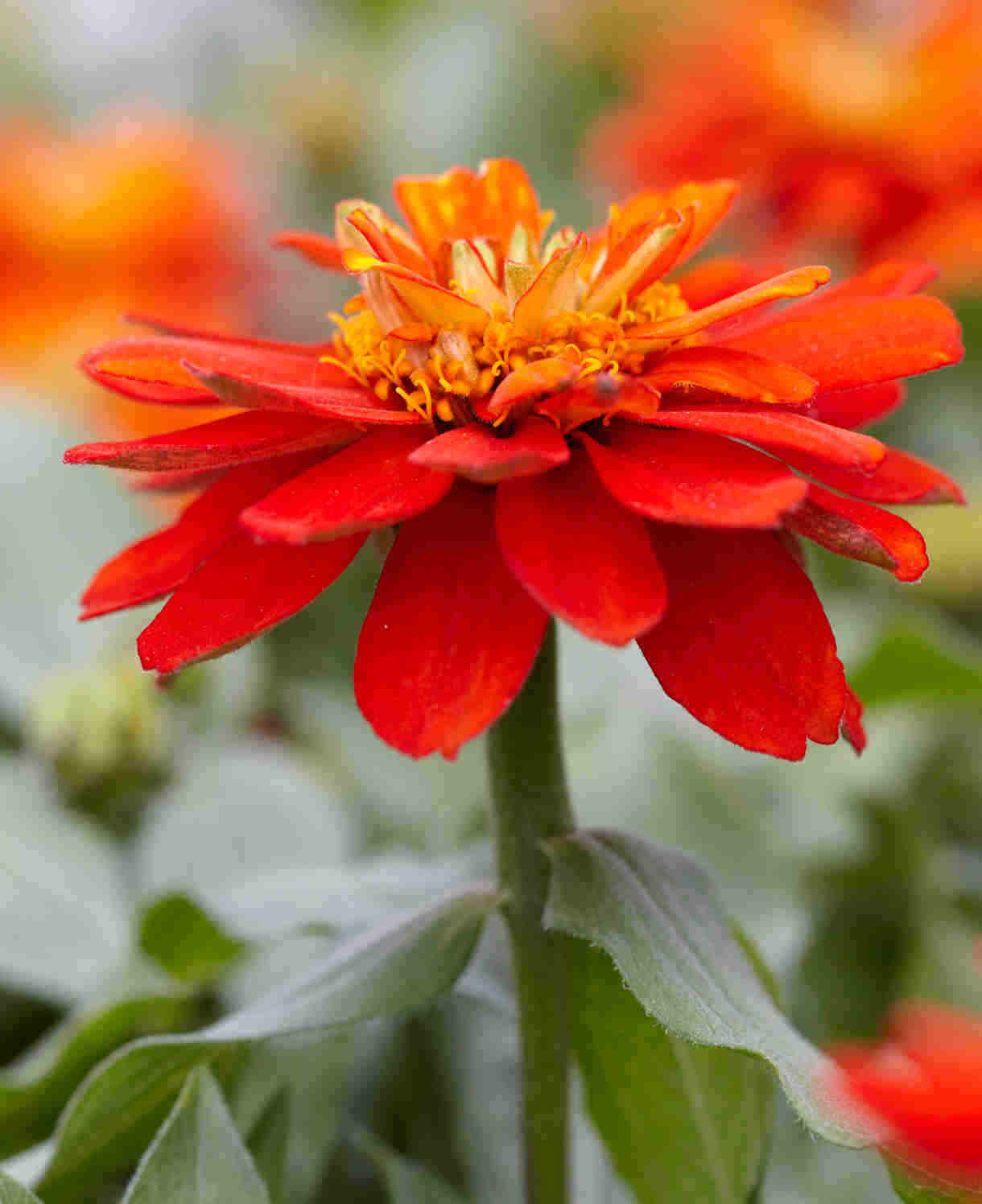
How to care for Hypericum
Pruning and Deadheading
Hypericum rarely need pruning as most grow into neatly rounded shrubs. If your plant does need a bit of a tidy up, then lightly prune back to shape after flowering. You can even do this with hedge trimmers rather than secateurs for ease. Dead, damaged or diseased material should also be removed either after flowering or in spring. Some of the more vigorous varieties may need a harder prune in spring if you wish to keep a certain height and shape. Hypericum can even be hard pruned down to around 60cm if needed.
Deadheading may encourage further blooms on some varieties but more buds and blooms will also appear without this (in lesser quantities) and leaving flowers in situ encourages the autumn berries to develop.
Watering
Water newly planted shrubs regularly during their first summer and until they establish a good root structure (which usually takes around 2 years). After this a weekly water during the growing season should be sufficient unless the weather is exceptionally hot and dry.
Cold Protection
This should not be needed throughout most of the UK as hypericum are, generally, hardy plants able to tolerate temperatures down to -12°C and beyond. We recommend you check each variety for this prior to planting and make appropriate adjustments if necessary.
Pests and Diseases
In general, Hypericum are robust and trouble free when presented with appropriate conditions. Plants can, however, be prone to rust which, although not fatal, can make the plant a little unsightly. If this may be an issue in your garden, check out some of the more recent varieties which have ‘rust resistance’.
How to propagate Hypericum
You can easily propagate from softwood or semi ripe cuttings. These are taken from summer to mid-autumn (Jul-Sep) from healthy stems off the current season’s growth. With semi-ripe cuttings the base of the cutting is firm, while the tip is still soft. Cuttings are taken from non-flowering shoots on young plants. Plants grown from cuttings will be a replication of the parent plant.
Plants will, in the majority, root readily from cuttings.
- Snip cuttings off the plant, if possible taking a longer piece than the ideal eventual length of around 10cm (to allow for trimming).
- Put them in a plastic bag straight away to prevent drying out.
- Fill several pots with a perlite-heavy compost mix (at least 50% perlite).
- Trim the end of the cutting to just below a node (point at which leaves grow).
- Remove lowest leaves and soft tip, leaving 2-4 leaves.
- If the remaining leaves are large, cut them in half with a sharp knife (to reduce water lost through transpiration).
- Insert the cuttings into the compost and water lightly. Several cuttings can be put in the same container if there is enough space to do this without them touching.
- Place in a greenhouse or propagating unit if you have one or covered with a plastic bag on a windowsill if not (out of direct sunlight).
- Keep the cuttings misted and occasionally watered until they root. You will know this has happened when roots emerge out of the bottom of the container.
- Gently remove rooted cuttings and pot them into individual pots. Grow on in a cool yet frost-free environment such as an unheated conservatory, greenhouse, or cold frame, until they are large enough to be planted out.
Common Hypericum questions
Is hypericum fast growing?
Hypericum are fast growing with a loose, spreading habit and slightly arching branches which make an effective weed suppressant. In fact, they'll survive almost anywhere except excessively wet soils.
Does hypericum grow in shade?
Appropriately known as unfussy workhorses of the garden, hypericum will flourish in dappled shade under trees and on dry banks where little else will grow.
Can you move hypericum?
Moving any established plant comes with a degree of risk so we would always suggest you take cuttings the season before as a failsafe. The perfect window for moving a mature plant is from mid spring to early summer when the soil is warming in order to encourage strong root development. Also, make sure you water your plant at least weekly whilst it is settling in.
Do birds eat hypericum?
Birds who like fleshy berries are unlikely to be interested in hypericum fruits. However, when the berries split and reveal the seeds underneath are attractive to finches, sparrows, bunting and other seed eating birds.
